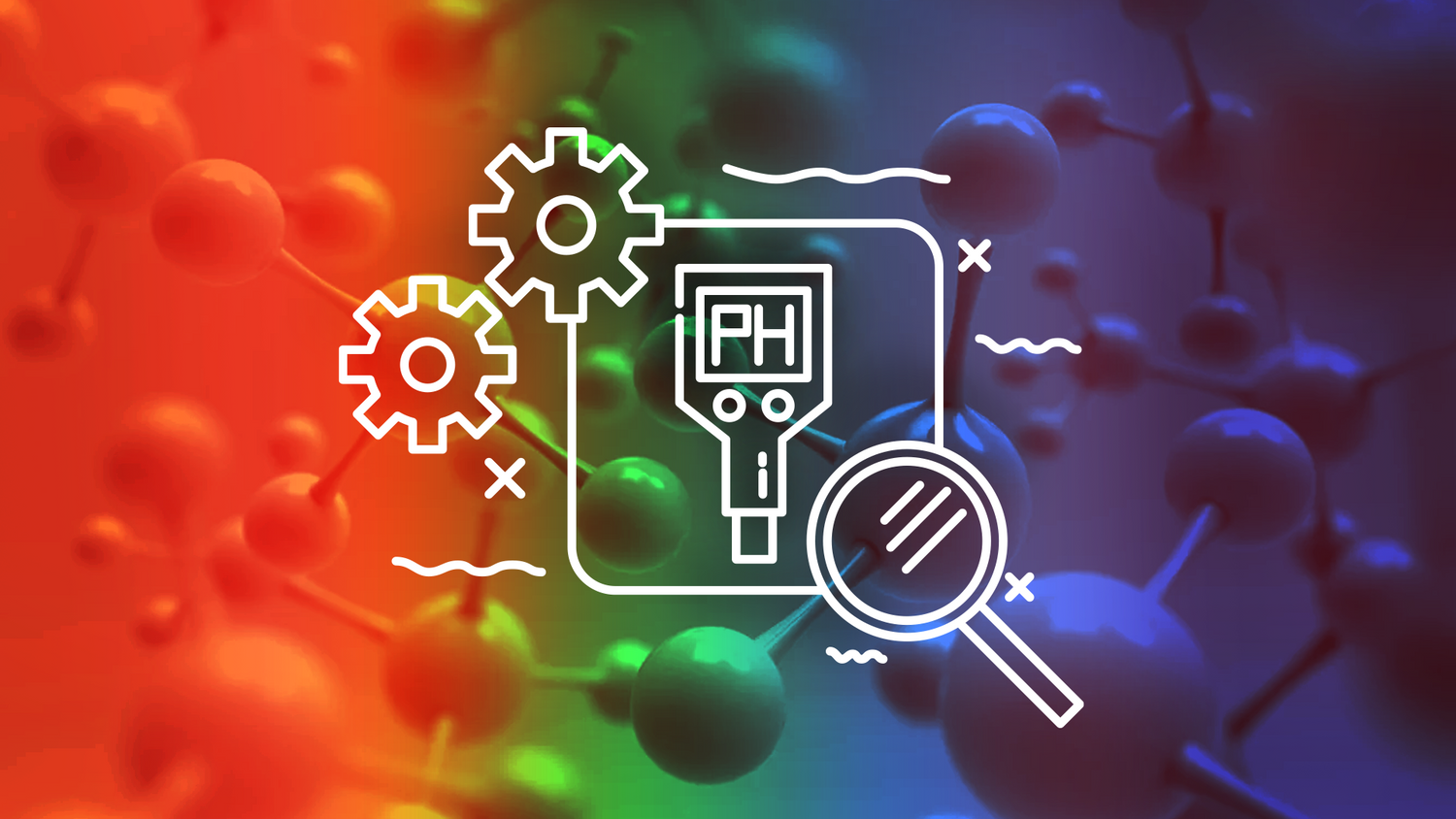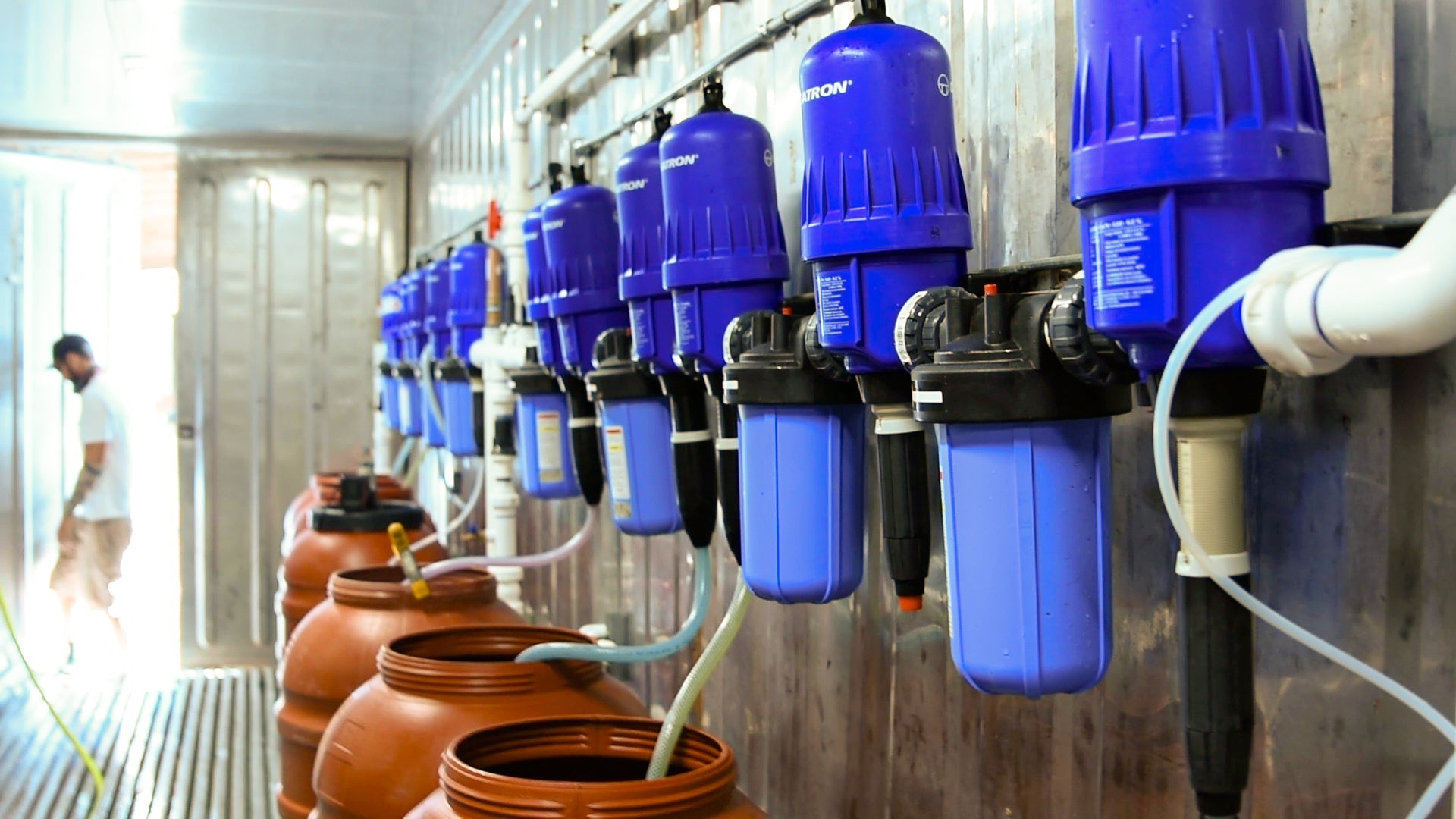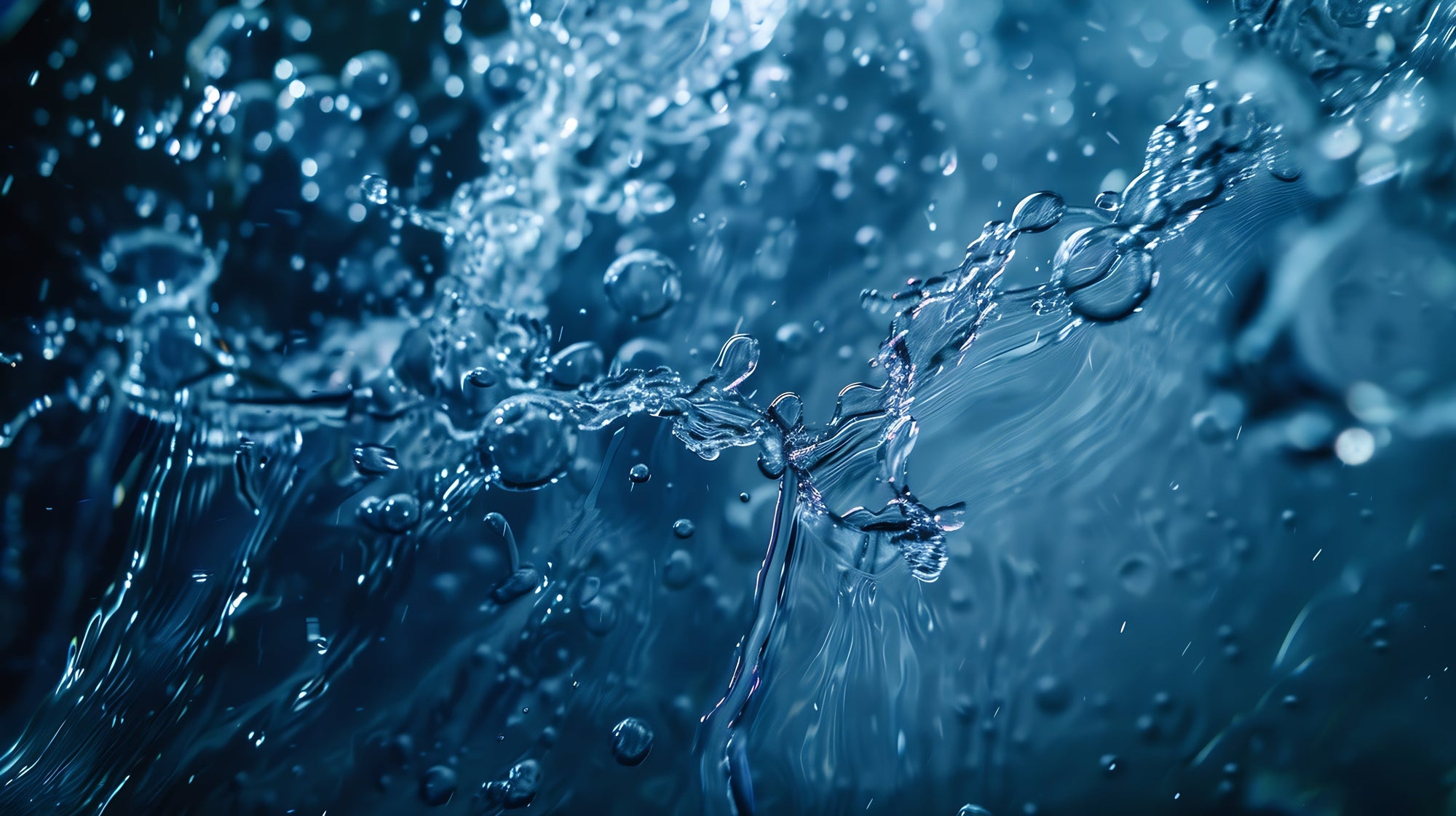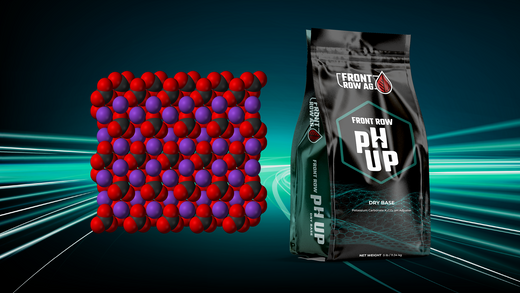Continuing from Part 1, let’s get into the specifics of
- How nutrient absorption affects rootzone pH
- When to use acids or bases
- Commonly used acids and bases in hydroponics
- Considerations on pH management
pH Changes in the Substrate
As we’ve established, nutrients are generally best absorbed between 5.8 - 6.2 pH, but it’s not always quite as simple as just setting the pH of the feed solution and forgetting it. Several factors can influence the pH in the root zone, especially the interaction between the plant roots and the fertilizer solution.
The nutrients in hydroponic fertilizer solutions exist as positively charged ions (cations) and negatively charged ions (anions). To effectively absorb these ions, the plant roots needs to maintain electrical balance. When plants take up cations (with their positive charge) they release an equivalent number of H+ ions (also positive charge) and when they take up anions (negative charge), they release an equivalent number of hydroxide (OH-) so as to maintain electrical balance. The preferential uptake of different nutrient ions can cause the pH of the substrate to “drift” over time.
Common cations in hydroponic fertilizer solutions include potassium (K⁺), magnesium (Mg²⁺), and calcium (Ca²⁺), while typical anions are nitrate (NO₃⁻), phosphate (PO₄³⁻), and sulfate (SO₄²⁻). These ions play critical roles in plant nutrition, but their uptake can significantly impact the pH in the root zone.
For example, calcium nitrate (Ca(NO₃)₂, one of the most commonly used sources of calcium and nitrogen, tends to cause cause rootzone pH to rise as the nitrate is absorbed. When plants absorb nitrate ions (anions) they tend to release hydroxide ions (OH⁻) to maintain electrical neutrality. This release of OH⁻ ions causes an increase in the pH of the root zone.
Conversely, ammoniacal nitrogen (NH4+) absorption tends to cause rootzone pH to decrease as the plants release H+ (cations) to maintain electrical neutrality.
Since nitrate is often the primary nitrogen source in hydroponic fertilizer and tends to be preferentially absorbed over other ions, it’s uptake is generally the dominant force in rootzone pH shifts. Calcium nitrate is particularly useful because it provides both a commonly absorbed cation (calcium) and an anion (nitrate), each influencing the root zone pH in opposite ways. However, the uptake of nitrate often has a more significant impact on increasing pH due to the release of OH⁻ ions.
In practice, an increase in the rootzone pH can be indicative of high nitrate absorption and this is often observed during periods of vigorous plant growth. In this scenario, plants may deplete the available nitrate rapidly, leading to a rise in pH. This can serve as a signal to the grower that the plants are growing vigorously and may require an increase in feed EC to maintain health and growth rate.
When to use acids or bases
A quality hydroponic fertilizer should generally be somewhat acidic (which increases the solubility of the minerals and reduces precipitation) and formulated in a way that tends to maintain rootzone pH stability as nutrients are absorbed. This leaves starting water type and quality as the dominant factor in whether acids or bases will be needed at a given facility.
In general, facilities that use city or well water with a starting EC of 0.2 or greater (containing some degree of alkalinity and buffering capacity), will require downwards pH adjustment with acids. Facilities that are using Reverse Osmosis (RO) or very low EC water will generally need to increase pH (and buffering capacity) using bases.
In practice, it’s best to mix the recipe and EC you plan to use and measure the resulting pH to determine the direction and degree of pH adjustment required.
Weak vs strong acids/bases
In chemistry, acids and bases are distinguished as either strong or weak based on their degree of dissociation in water.
Strong acids and bases dissociate completely in water, meaning they release all of their hydrogen ions (H⁺) or hydroxide ions (OH⁻) respectively. For example, hydrochloric acid (HCl) and sulfuric acid (H₂SO₄) are strong acids, while sodium hydroxide (NaOH) is a strong base. These substances are efficient at altering the pH of a solution significantly and rapidly. A particularly useful base we’ll look at is potassium carbonate (K₂CO₃).
Weak acids and bases only partially dissociate in water, releasing a fraction of their available H⁺ or OH⁻ ions. Acetic acid (CH₃COOH) and citric acid (C₆H₈O₇) are examples of weak acids, and ammonia (NH3) is a weak base. They tend to provide a smaller degree of pH adjustment.
Reducing pH with acids
As discussed above, introducing an acid increases the H+ concentration, lowering the pH, while adding a base decreases the H+ concentration (or increases the OH- concentration), raising the pH.
The most common strong acids used in hydroponics are phosphoric acid (H3PO4) and sulfuric acid (H2SO4). Both of these acids not only decrease the pH but also supply nutrients (phosphorus and sulfur, respectively), so it’s important to factor in the additional nutrient contribution at higher usage rates. Sulfuric acid has the benefit of not affecting the NPK ratios of the final solution. Since these are strong acids, they will exert large and rapid changes in pH and should be added slowly to not overshoot the desired adjustment.
The most common weak acids are citric acid and acetic acid. These will reduce the pH more gradually and to a lesser degree, requiring greater usage rates. These weak acids aren’t recommended in general as they tend to be metabolized by plants and microbes, reducing the stability of the solution over time. Cultivators may notice issues with pH drift and the formation of solids in the irrigation system when using these acids.
Most facilities will function best with the use of diluted phosphoric or sulfuric acid for decreasing pH. Regardless of the choice, it’s important to apply them safely and incrementally while regularly monitoring the final solution.
Increasing pH with bases
To review, bases increase solution pH by decreasing H+ concentration or increasing OH- concentration of ions in solution. This is generally going to be required when using RO water, due to the low starting alkalinity and acidic nature of high quality fertilizer.
The most common strong base used by cultivators is Potassium Hydroxide (KOH). As a strong base, KOH dissociates completely in solution releasing K+ and OH- ions, causing a large and rapid increase in pH. Along with adjusting pH, it adds potassium to the solution and at higher usage rates this can shift NPK ratios, so always use the minimum amount required.
The immediate and pronounced effect of KOH on pH levels requires cautious application as it can lead to a rapid and excessive rise in pH, potentially causing nutrient imbalances and negatively affecting plant health. When injected in concentrated form, the localized increase in pH can cause many nutrients to react forming precipitates and damaging irrigation systems. To avoid this, KOH should be heavily diluted prior to injecting or adding to the nutrient solution. KOH is also extremely caustic and less stable in solution, so adequate PPE and monitoring are critical.
Potassium Carbonate (K2CO3) is another base often used in hydroponics but is milder and has a lot of comparative advantages compared to KOH: It’s highly stable and much safer than KOH while providing a more gradual pH adjustment as well as enhanced solution pH stability due to it’s buffering capacity.
When added to water, it first disassociates into K+ and carbonate (CO₃²⁻ ions). These carbonate ions react with water to produce bicarbonate (HCO3-) and OH- ions. In addition to it’s immediate pH increasing effects from the OH- ions, the bicarbonate ions increase the buffering capacity and reduce future pH fluctuations.
These qualities make potassium carbonate an excellent choice for must cultivation facilities requiring pH up and are why we use it as the principal ingredient in Clean Up.
An important note - since potassium carbonate increases pH more gradually than some bases, it’s important to add it gradually and wait up to 15 minutes to see the full effect in solution. If the pH is measured directly at the exit of a dosing panel or immediately after a direct-to-reservoir addition (before it has had time to show it’s full effects), that can lead the applicator to apply more than is necessary. When determining the initial application rate, wait 10-15 minutes between each addition and measurement so as not to overshoot. When monitoring feed pH during normal operations, check pH at the dripper rather than at the doser panel.
Additional Considerations
Regular pH monitoring and careful adjustment are essential. The type of hydroponic system can dictate unique pH management approaches. Different plant species have distinct pH preferences, necessitating tailored strategies. Regardless of the specific chemical used, organic acids and bases are not recommended due to their interaction with microbes.
Source water composition strongly influences the best pH management strategy for a facility and cultivators should be aware of any changes to water quality that can occur due to season shifts, municipal water treatment, and poorly maintained RO and filtration systems.
Lastly, validate and calibrate your pH meters frequently! The technology used here is inherently delicate and a inaccurate pH meter can cause catastrophic problems.





7 ความคิดเห็น
Front Row Ag
Re: Jacob’s Question: Yes, we can provide references. Please specify which statements from the blog you are requesting references for.
Re: Jacob’s Question: Yes, we can provide references. Please specify which statements from the blog you are requesting references for.
Jacob
Do you have an any references for this information.
Do you have an any references for this information.
Joseph Brost
Can you elaborate on the bloom boost technique? Do I raise the injection ratios of bloom during swell ? Or did I take that wrong ? And if so I’m running the 3-2-2 stock . And the Normal strength feeding .
Can you elaborate on the bloom boost technique? Do I raise the injection ratios of bloom during swell ? Or did I take that wrong ? And if so I’m running the 3-2-2 stock . And the Normal strength feeding .
Front Row Ag
Re: “Should I feed at a higher ph if my runoff ph seems to be dropping?” The answer is “maybe”. If the pH is dropping really low despite consistently achieving 20%+ runoff and feeding at the correct EC, it can be a valid strategy to raise feed pH slightly.
For coco / RW I wouldn’t go much above 6.2 pH though.
-T
Re: “Should I feed at a higher ph if my runoff ph seems to be dropping?” The answer is “maybe”. If the pH is dropping really low despite consistently achieving 20%+ runoff and feeding at the correct EC, it can be a valid strategy to raise feed pH slightly.
For coco / RW I wouldn’t go much above 6.2 pH though.
-T
Rick
Excellent information! I appreciate the chemistry behind the botany of growing canxxxis. I Look forward to your next article.
Excellent information! I appreciate the chemistry behind the botany of growing canxxxis. I Look forward to your next article.
Christopher Norrell
Great information. Should I feed at a higher ph if my runoff ph seems to be dropping? I seem to have constant issues and am starting over again
Great information. Should I feed at a higher ph if my runoff ph seems to be dropping? I seem to have constant issues and am starting over again
Hank
Yes. Calibration every month. 💯 worth the 5 minutes it takes. Great article! Looking forward to more.
Yes. Calibration every month. 💯 worth the 5 minutes it takes. Great article! Looking forward to more.